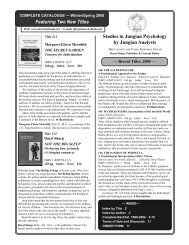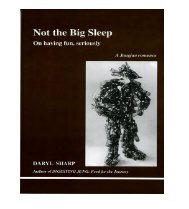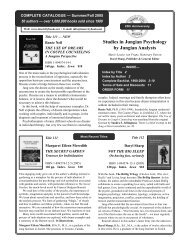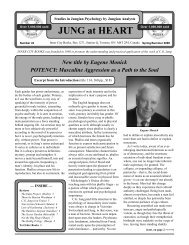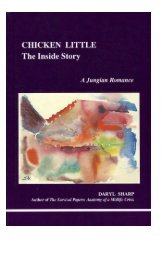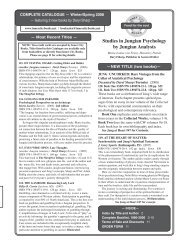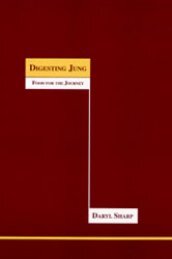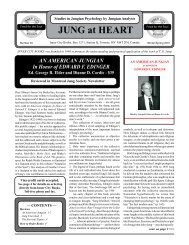Personality types: Jung's model of typology - Inner City Books
Personality types: Jung's model of typology - Inner City Books
Personality types: Jung's model of typology - Inner City Books
- No tags were found...
You also want an ePaper? Increase the reach of your titles
YUMPU automatically turns print PDFs into web optimized ePapers that Google loves.
34 Introduction to Jungian TypologyIt can be as difficult to establish one's own type as that <strong>of</strong>another person, especially when people have already becomebored with their primary function and dominant attitude. VonFranz comments:They very <strong>of</strong>ten assure you with absolute sincerity that theybelong to the type opposite from what they really are. The extravertswears that he is deeply introverted, and vice versa.This comes from the fact that the inferior function subjectivelyfeels itself to be the real one, it feels itself the more important,more genuine attitude. . . . It does no good, therefore,to think <strong>of</strong> what matters most when trying to discover one'stype; rather ask: "What do I habitually do most?" 31In practice, it is <strong>of</strong>ten helpful to ask oneself: What is mygreatest cross? From what do I suffer the most? Where is it inlife that I always knock my head against the wall and feelfoolish? The answers to such questions generally lead to theinferior attitude and function, which then, with some determinationand a good deal <strong>of</strong> patience, may perhaps be broughtto a degree <strong>of</strong> consciousness.Caveat to the ReaderIt will now be apparent that while there is a simple eleganceand symmetry to <strong>Jung's</strong> <strong>model</strong> <strong>of</strong> <strong>typology</strong>, its use as a diagnostictool, or even as a guide to self-understanding, is farfrom simple. Jung warns his readers accordingly:Although there are doubtless individuals whose type can berecognized at first glance, this is by no means always the case.As a rule, only careful observation and weighing <strong>of</strong> the evidencepermit a sure classification. However simple and clearthe fundamental principle <strong>of</strong> the [opposing attitudes and functions]may be, in actual reality they are complicated and hard31 <strong>Jung's</strong> Typology, p. 16.



